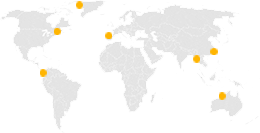Just like a car, the basic principles of most sewing machines are the same. The car is an internal combustion engine, and the sewing machine is a coil stitching system.
The stitch stitching method is very different from ordinary hand stitching. In manual stitching, the sewing worker ties a thread in the small eye at the end of the needle, and then passes the needle and the thread completely through the two pieces of fabric, from one side to the other, and then back to the original side. In this way, the needle drives the thread in and out of the fabric, stitching them together.
Although this is simple for manual work, it is difficult to pull with a machine. The machine needs to release the needle on one side of the fabric and then grab it again on the other side. Then, it needs to pull the loose thread out of the fabric, reverse the direction of the needle, and repeat the steps in the opposite direction. This process is too complicated for a simple machine and impractical, and even for manual work, it is only easy to use when a shorter thread is used.
Instead, the sewing machine partially penetrates the needle through the fabric. On the needle, the eye of the needle is just behind the tip, not at the end of the needle. The needle is fixed on the needle bar, and the needle bar is pulled up and down by a motor through a series of gears and cams (described in detail later). When the needle passes through the fabric, it pulls out a small loop on one side and the other. A device under the fabric will grab this loop and wrap it around another thread or another loop of the same thread.
Loop stitching is chain stitching. If you want to sew chain stitches, the sewing machine uses the same length of thread to loop the back of the thread. The fabric is located on a metal plate under the needle and is fixed with a presser foot. At the beginning of each stitching, the needle passes through the fabric to draw a loop. A device that makes a loop grasps the loop before the needle is pulled out, and the device moves in synchronization with the needle. Once the needle pulls out the fabric, the feed dog device (described later) will pull the fabric forward.
When the needle passes through the fabric again, the new stitch will pass directly through the middle of the previous stitch. The coil-making device will grab the wire again and make a coil around the next coil.
The main advantage of chain stitching is that it can sew fast. However, it is not strong, and if one end of the thread is loosened, the whole sewing may loosen. Most sewing machines use a stronger type of seam called a lockstitch. You can understand the working principle of a typical lock stitching device in the animation below.
The important components of the lock stitching device are the hook and spool assembly. The spool is a coil of thread placed under the fabric. The latter rotates under the drive of a motor and is synchronized with the movement of the needle.
As with chain stitching, the needle passes through the fabric to pull out a loop, while the feed dog moves the fabric forward, it rises again, and then another loop is inserted. However, this stitching mechanism does not connect the different loops together, but connects them to another piece of wire that is loosened from the spool.
When the needle wraps the thread into the loop, the rotating shuttle uses the crochet needle to grasp the loop. As the shuttle rotates, it draws a loop around the thread from the spool. This makes the stitching strong.
This kind of rotary shuttle also evolved from the straight shuttle. The stitching principle of the sewing machine has evolved from a straight shuttle to a rotary shuttle, and it has entered a mature period.
www.cnjinlong.net




 中文
中文 EN
EN

 Building 4, No. 81, Qingyin Lane, Jiulonghu Town, Zhenhai District, Ningbo, Zhejiang
Building 4, No. 81, Qingyin Lane, Jiulonghu Town, Zhenhai District, Ningbo, Zhejiang 86-0574-86533378
86-0574-86533378 86-15372692818
86-15372692818 908197098@qq.com
908197098@qq.com